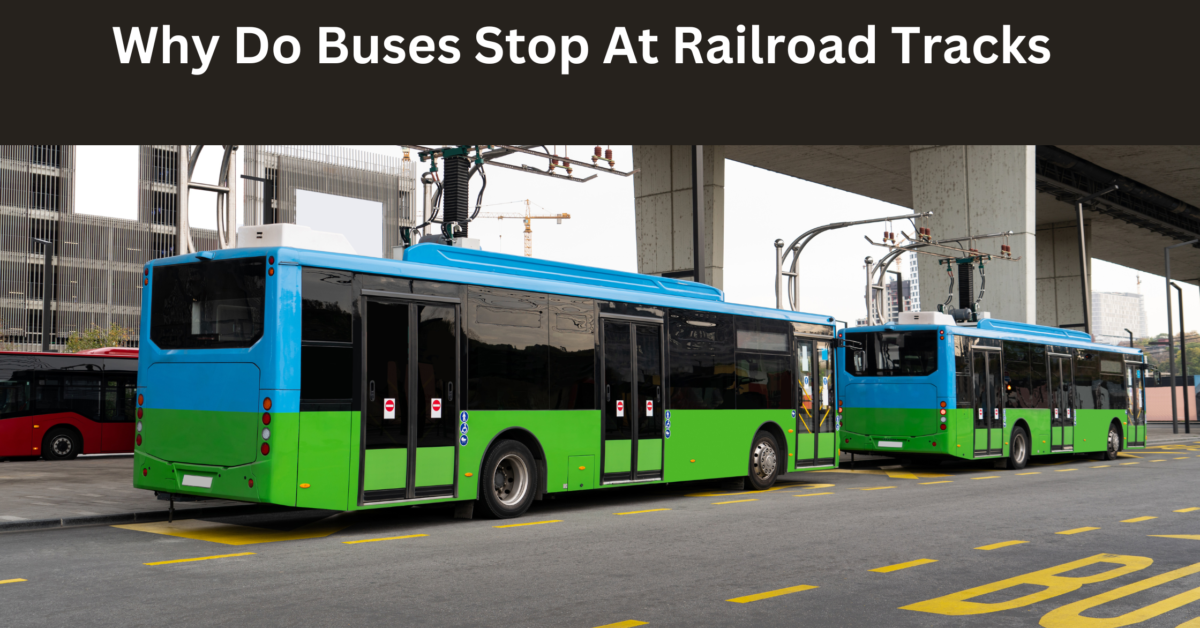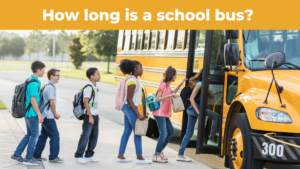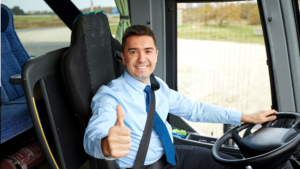Why Do Buses Stop At Railroad Tracks
The rule was put in place to ensure the safety of the passengers and driver. While drivers had always been advised to stop when approaching railroads, a tragic incident led to the extra precautions that they are now required to take when a bus comes to a train track.
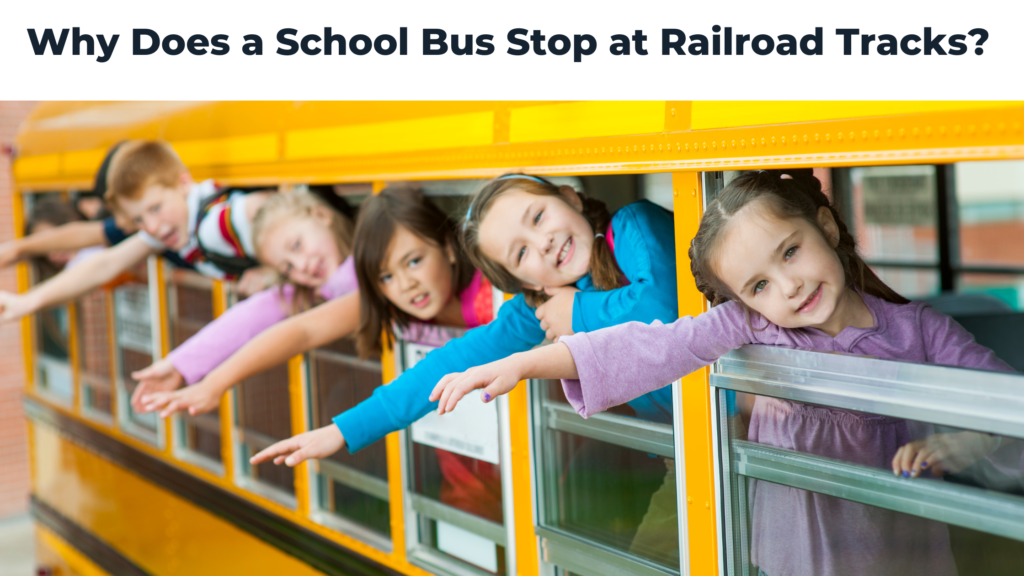
The Incident That Led to the Requirement
On December 1, 1938, in Sandy, Utah, a tragedy happened. It became one of the worst school bus incidents in the United States. A school bus from Jordan High School was in a snowstorm. The storm made it hard to see. The bus, with students and the driver, came to a railroad crossing. A Denver & Rio Grande Western freight train was coming at about 60 mph.
The driver thought the tracks were clear because of the snowstorm. He did not see the train. When the bus crossed the tracks, the train hit it in the center. This terrible accident took many lives. It became one of the worst incidents with a school bus in the States.
This tragedy led to strict laws for school bus safety at railroad crossings in the United States. Now, buses must stop, quiet down, turn off the radio, and have all students listen before crossing. This helps make sure it is safe to go.
The accident showed the need for safety measures like stopping at railroad tracks, even in snowstorms. The laws made after this accident made bus drivers stop and listen for trains. They must open windows and the passenger door to hear better. These rules help prevent such sad events from happening again. Stopping at railroad tracks is very important to keep lives safe.
Buses and Railroad Crossings Safety
Federal law says school buses must stop at train tracks. This keeps students safe. Drivers should stop 15 feet away from the crossing. They need to look and listen for trains. This is very important. Buses take students to and from school safely across the country.
Schools have to follow strict safety rules. They check buses often to make sure they are safe. Drivers must follow steps at railroad crossings. They stop, look both ways and listen for a train horn. This helps prevent accidents. It ensures no trains are coming when the bus crosses.
Safety checks are key to keeping buses safe. Schools need to inspect their buses regularly. Drivers must know and follow safety steps. This is very important for school buses. They carry precious cargo—students.
These steps help schools keep students safe on the bus. This means stopping at train tracks and checking safety all the time. A full approach makes sure buses are well-maintained and drivers stay alert. This puts student safety first every time they ride the bus.
Why Do Buses Stop At Train Tracks
When a bus reaches a railroad track, it is legally required to stop. After the driver stops the bus, they will quiet down any noise like the radio, fans, or talking students. They will then open the windows and the passenger door and listen for any oncoming trains.
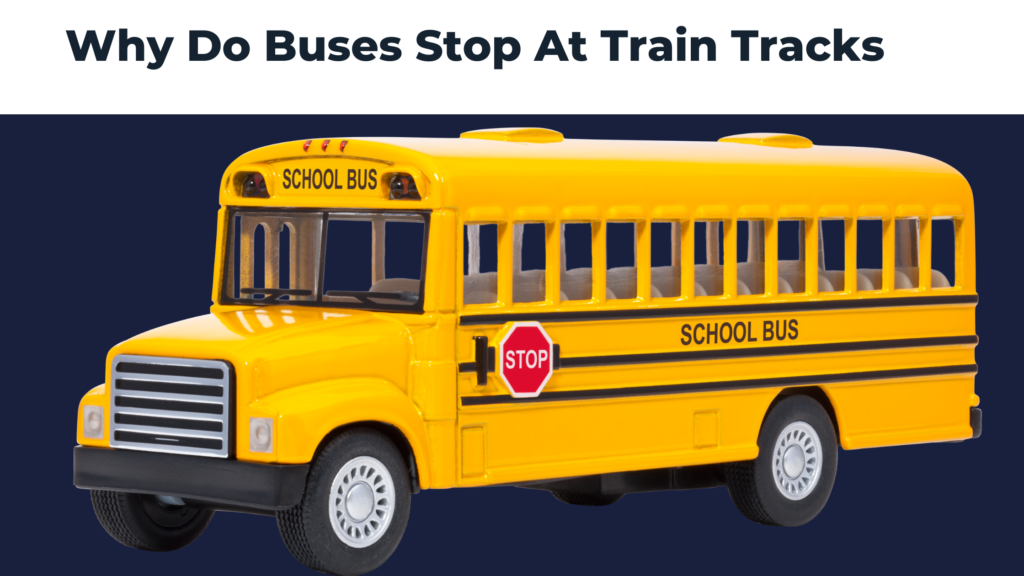
- Buses stop at train tracks to be safe. They stop and look both ways. This is to make sure no train is coming.
- Trains are big and fast. They can’t stop quickly. So, buses check first before crossing.
- Bus drivers open the door to listen. This helps them hear a train coming. It’s important for everyone’s safety.
- Sometimes, trains are quiet. But they are still dangerous. Stopping and looking helps keep everyone safe.
- Safety rules are there to protect us. Buses stopping at train tracks is one of these rules. It helps keep bus riders and drivers safe.
- Next time you see a bus stop at train tracks, you’ll know why. It’s all about safety.
Why Does a School Bus Stop at Railroad Tracks?
We hear that rumbling sound, see the warning bells, and hear the loud whistle of a train. Whether you live in a quiet or busy area, you’ll see trains and train tracks. When the bells ring and the arms come down, you need to stop and wait for the train to pass.
This helps avoid adding extra time to your trip. But if you’ve ever followed a school bus, you might have noticed it stops at all train crossings, even when no train is in sight. Ever wonder why?
It’s the law
The reason is simple: it’s the law! School bus drivers must stop at all train tracks. They have to check both ways and listen for any train. This is part of their training.
Stop, look, listen
This law came about after a terrible accident in December 1938. A school bus in Utah was hit by a train because the bus driver couldn’t see well in snowy weather. The train track alarms and arms weren’t working right. Sadly, the driver and 24 students died. Now, school bus drivers must stop, look along the tracks, open the doors and windows, and listen carefully to see if a train is coming.
Stop within 50 feet
In Florida, there is a rule that says certain vehicles, like school buses, must stop within 50 feet but no less than 15 feet from the railroad. While stopped, the driver must listen and look both ways for any trains or signals. They can only go when it’s safe.
Stopping might add a bit of time to your trip, but it’s a smart safety measure. It makes sure that everyone, especially students, gets to school safely.
FAQs
Why do buses stop at train tracks in Canada?
The simple answer: It’s the law! School bus drivers are legally required to not only stop at all train tracks but to look in both directions and listen for the possibility of a train. It is required and part of a school bus driver’s training for approaching tracks.
Why does a train stop on the track?
Their tasks sometimes involve collecting or delivering freight cars at industrial railways. Occasionally, they are responsible for increasing air pressure in the braking system after adding more cars. Periodically, they address mechanical issues on either the locomotive or rolling stock.
Why do trains have to stop?
Why do trains sometimes stop and block road crossings? There can be many reasons: Congestion on the system generally or in a specific train yard, a surge in shipments (harvest time, etc.), track repair or maintenance – any number of things.
Why do trains only run on tracks?
Trains are constructed according to a specific gauge, which refers to the distance between rails. The majority of trains run on steel tracks equipped with steel wheels that offer greater efficiency due to their low friction compared to other modes of transportation. The origins of trains can be traced back to wagonways, which utilized railway tracks and were either horse-powered or operated by cable systems.


